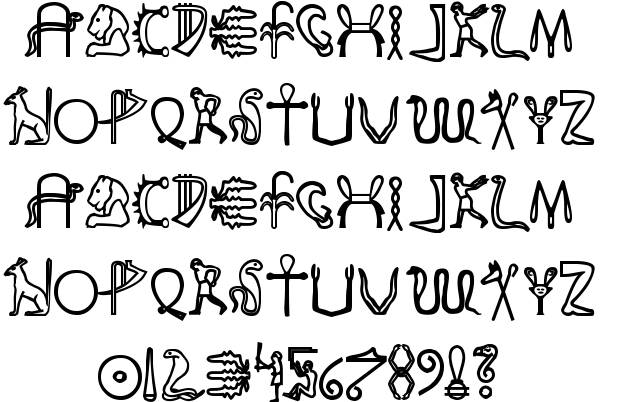

Drawing from an early German sans serif used for catalog text, Proto Grotesk revives an era when clunkiness was a virtue.

That makes some sense, but there’s no reason type can’t be both steadfast and peculiar. The sans serif was also created during the Industrial Revolution in 1816. Consequently, over time, the slab serif lost in the longevity of popular usage to the increasingly popular sans serif.Over the last hundred years or so, utilitarian typefaces have shed most of their quirks and eccentricities on the way to becoming more versatile and universal.


The reason slab serifs were not used for body text was because they were not optically legible when scaled to be a small size, so they were only used for large, bold advertising purposes.Įven though the slab serif had a large success in advertising popularity, it became almost like a fad, as its usage diminished as the 19th century progressed. Typically, the slab serif was mainly used for bold headlines, being seen on the majority of the newly innovated, printed advertisements you’d see near the start of the 19th century. Examples of slab serif usage would have entailed headlines for: newspapers, posters, billboards, and other printed advertising media. The Industrial Revolution was filled with new technologies such as mechanical manufacturing, mass production, printing, and new energy. Mass production resulted in more products, and advancements in newspapers increased the need for advertising. All of these new changes in society would call for the need of new and increased amounts of advertising, due to the overall increased economic efficiency through the aid of more advanced technology. To match the need for more distinct, bold, attention grabbing typefaces in the Industrial Revolution, the slab serif was seen as meeting those requirements and was, therefore, quickly popularized throughout Europe, then internationally. The slab serif was created during the Industrial Revolution (1760 to 1840). Generally, art and design are reflections of the time period in which they were created. It is speculated it was simply to increase the popularity of the typeface, using the trending fascination with Egypt as leverage to further popularize the slab serif. It’s quite interesting how the Egyptian typeface is false advertising, yet this typeface was so famously used for advertising. This alternative name held its origins from the French, to be specific, Napoleon Bonaparte’s Egyptian Campaign from 1798 to 1801. Essentially, Bonaparte brought along scientists and intellectuals to gather information on Egypt as a cover for fact that his true intentions for going to Egypt was to gain French power. When Bonaparte was unsuccessful in his mission, his team did bring back a lot of new information about Egypt, so Egyptian culture became a novelty. The slab serif was given the name Egyptian, even though there is no correlation between Egypt and the typeface. Egyptian was already used to refer to sans serif typefaces in England, so the reference of Antique remained steady there. However, the slab serif was quick to develop the alternative name of the Egyptian typeface in other parts of the world. In 1815, Vincent Figgins invented the slab serif font family, entirely by original design, from his imagination, translated into the physical world. The first slab serif typeface that he created was initially named Antique in England.


 0 kommentar(er)
0 kommentar(er)
